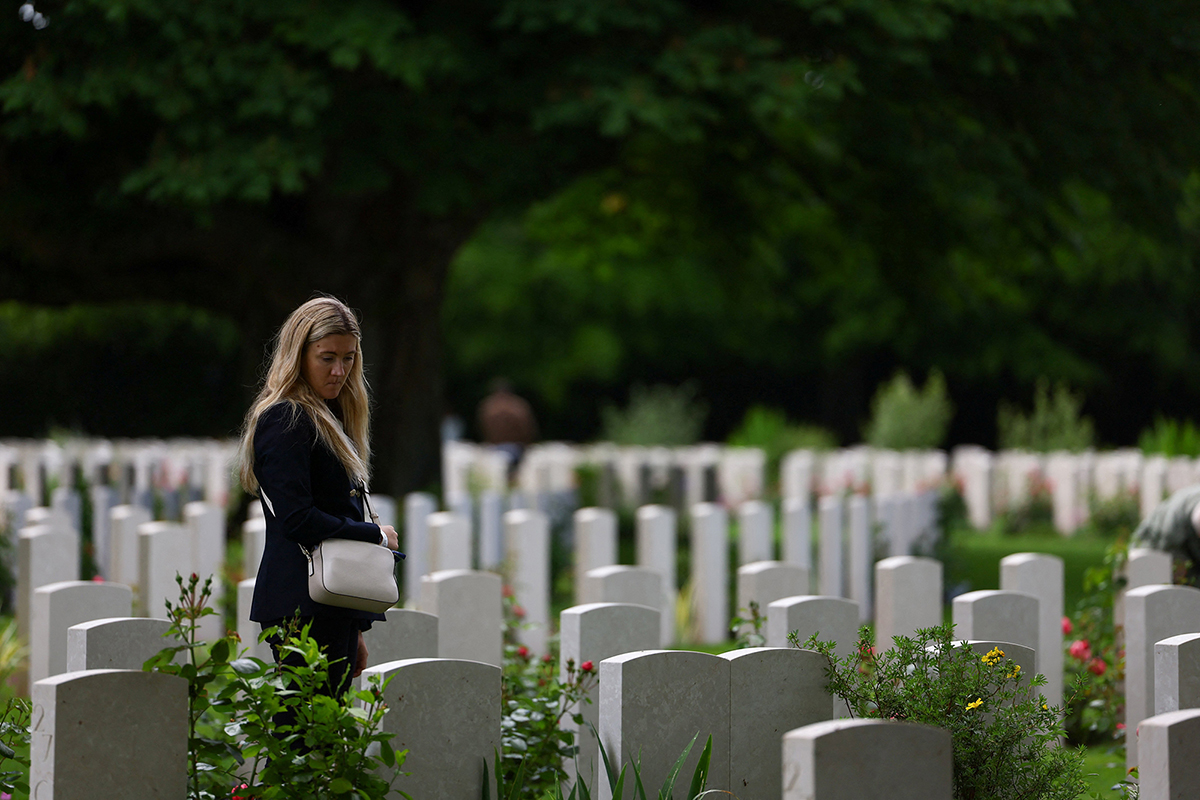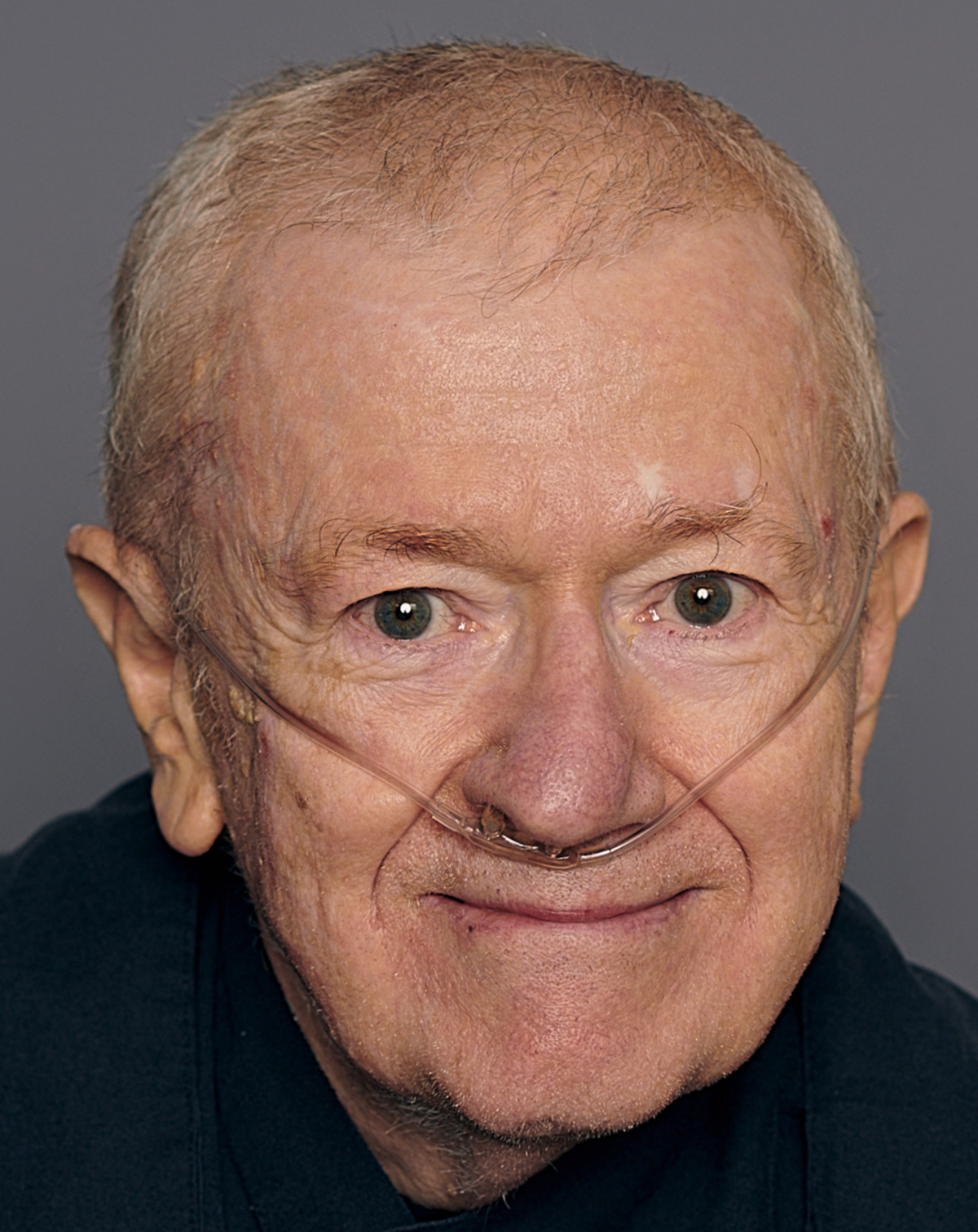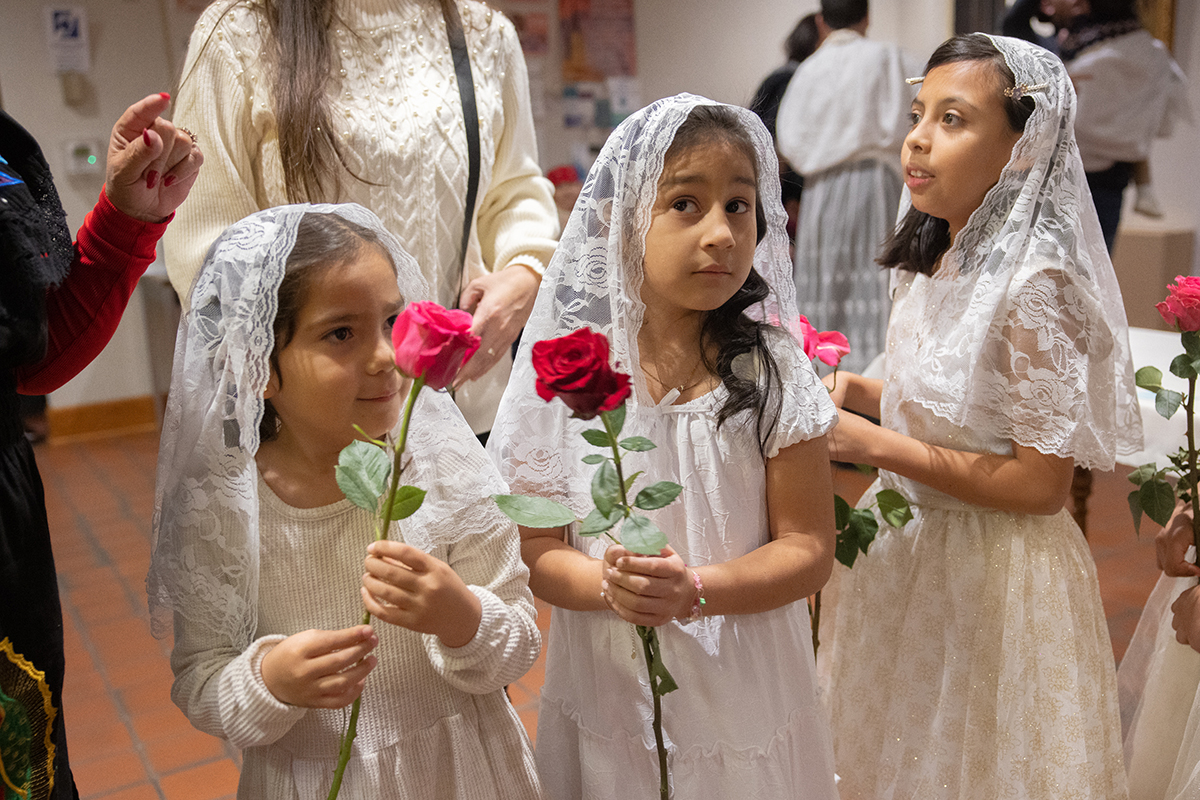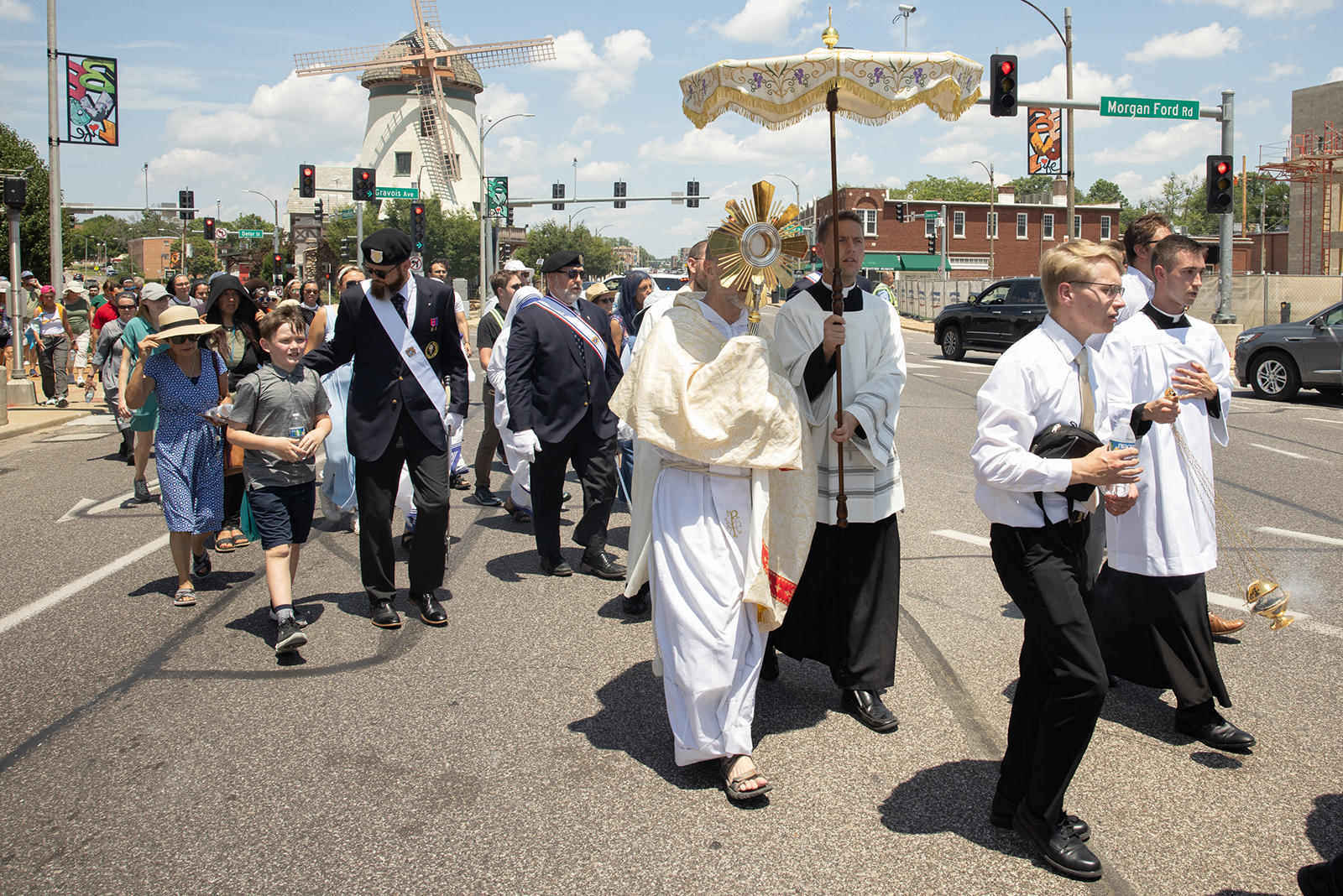D-Day ceremony will remember priests, sisters who died

June 6 marks the 80th anniversary of Allied invastion of Normandy
PARIS — It was an emotional welcome when 48 veterans from around the U.S. arrived at the Deauville-Normandy Airport June 4 on board a special flight from Atlanta to celebrate the 80th anniversary of D-Day on June 6.
France’s first lady Brigitte Macron and top French officials were there to greet them along with French children, some dressed in clothing imitating the 1944 military uniforms.
The first lady was seen hugging the veterans, greeting each with traditional two kisses on the cheek. U.S. military men, most over 100 years old, appeared in good, cheerful spirits as they arrived at Normandy.
U.S. President Joe Biden arrived in Paris June 5 and was scheduled to attend the official state celebration in Normandy June 6 — next to “Bloody Omaha” and other beaches which saw thousands of Allied soldiers sacrifice their lives to save France and Europe from German Nazi occupation.
The anniversary celebrations were to be attended by Normandy’s Catholic bishops, led by Bishop Jacques Habert of Bayeux-Lisieux, as well as the president of the French bishops’ conference, Archbishop Éric de Moulins-Beaufort of Reims.
On June 8, in Bayeux Cathedral, Bishop Habert will bless a marble plaque bearing the names of 138 priests, seminarians, and men and women religious who disappeared during World War II, either as victims of air attacks or deported to death camps for acts of resistance.
For the first time, the names of religious sisters who died in the Allied bombing raids that accompanied D-Day will be honored. Among them were almost 100 nuns who died under Allied bombardment on June 6, 1944.
A diocesan priest, Father Pascal Marie, has been working since 2004 to find the names of religious sisters who perished in northern France’s Normandy on that day. “The lists of victims drawn up in 1944 mentioned the names of the priests, but not those of the nuns,” he said, adding that only the communities were mentioned.
Father Marie began researching community archives and interviewing elderly nuns.
Among the religious communities tragically affected by Allied bombing that accompanied the beach landings was the Little Sisters of the Poor at St. Thérèse’s convent in Lisieux. Of the 17 sisters, 13 were killed, according to Father Marie.
On June 8, the plaque to be unveiled also will bear the names of seminarians and priests killed in action or deported because they were members of the Resistance.
“Among them is Father Jean Daligault, who is a deeply moving figure,” Father Marie explained.
“He was arrested by the Gestapo (German Nazi police) in 1941, sent to prison, then to a concentration camp. He died in Dachau, in April 1945, shot in the back of the head the day before the camp was liberated,” the priest said.
“After his death, it was discovered that he had continued to paint in prison and in the camp,” Father Marie said. “He used all the materials at his disposal, the straw from his mattress, shreds of newspaper, and rust for his paint. He befriended a German priest who secretly brought out (Father Daligault’s) works.”
Over 150 of the French martyr priest’s works were eventually collected.
“He painted life in the camps, as well as portraits of himself, which show the progress of his physical decline,” Father Marie explained. “These impressive testimonies are now on display at the Besançon museum in eastern France.”






